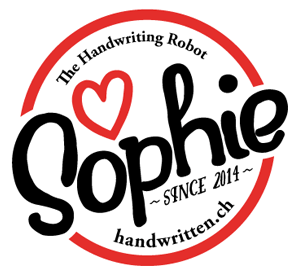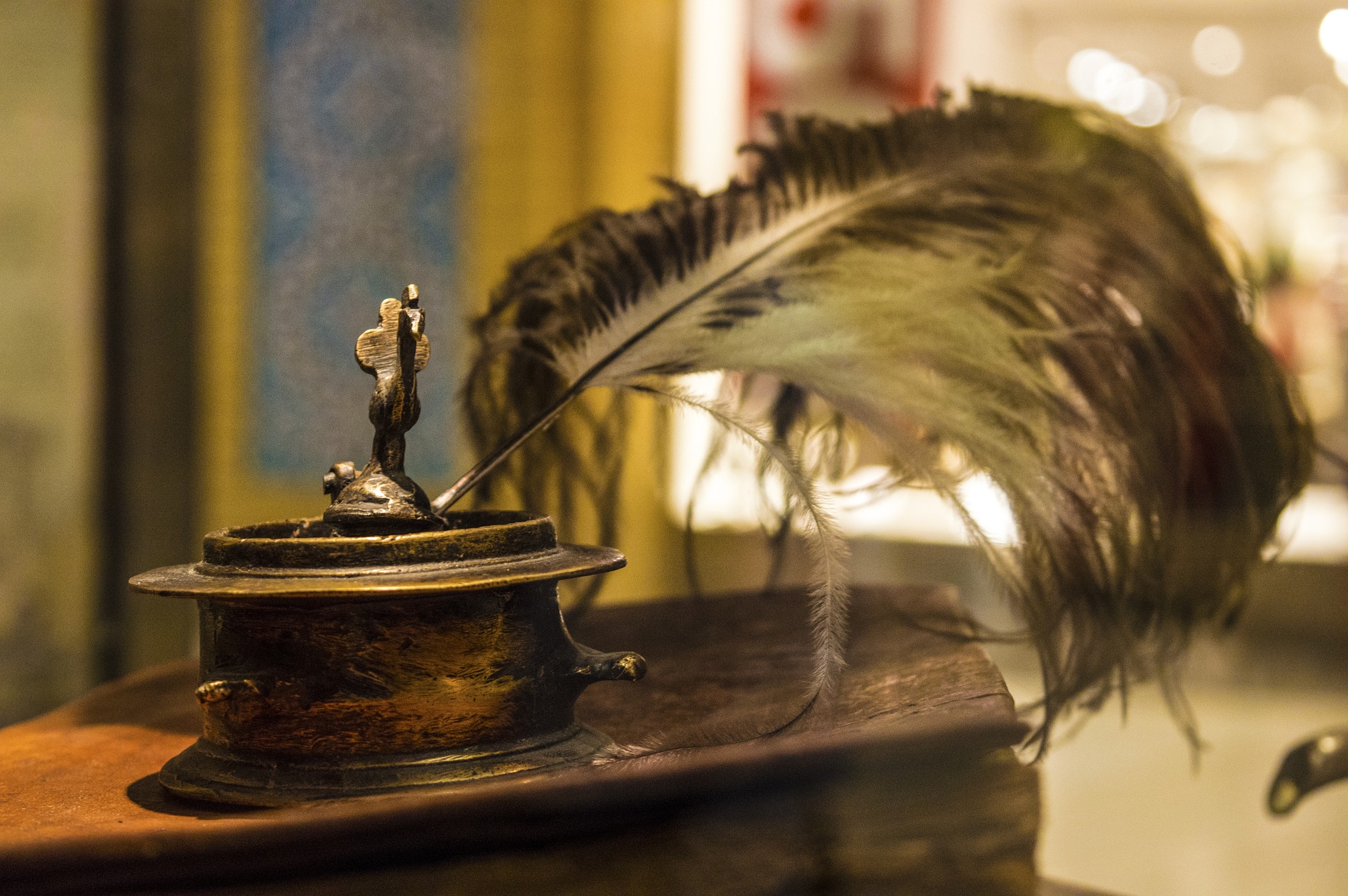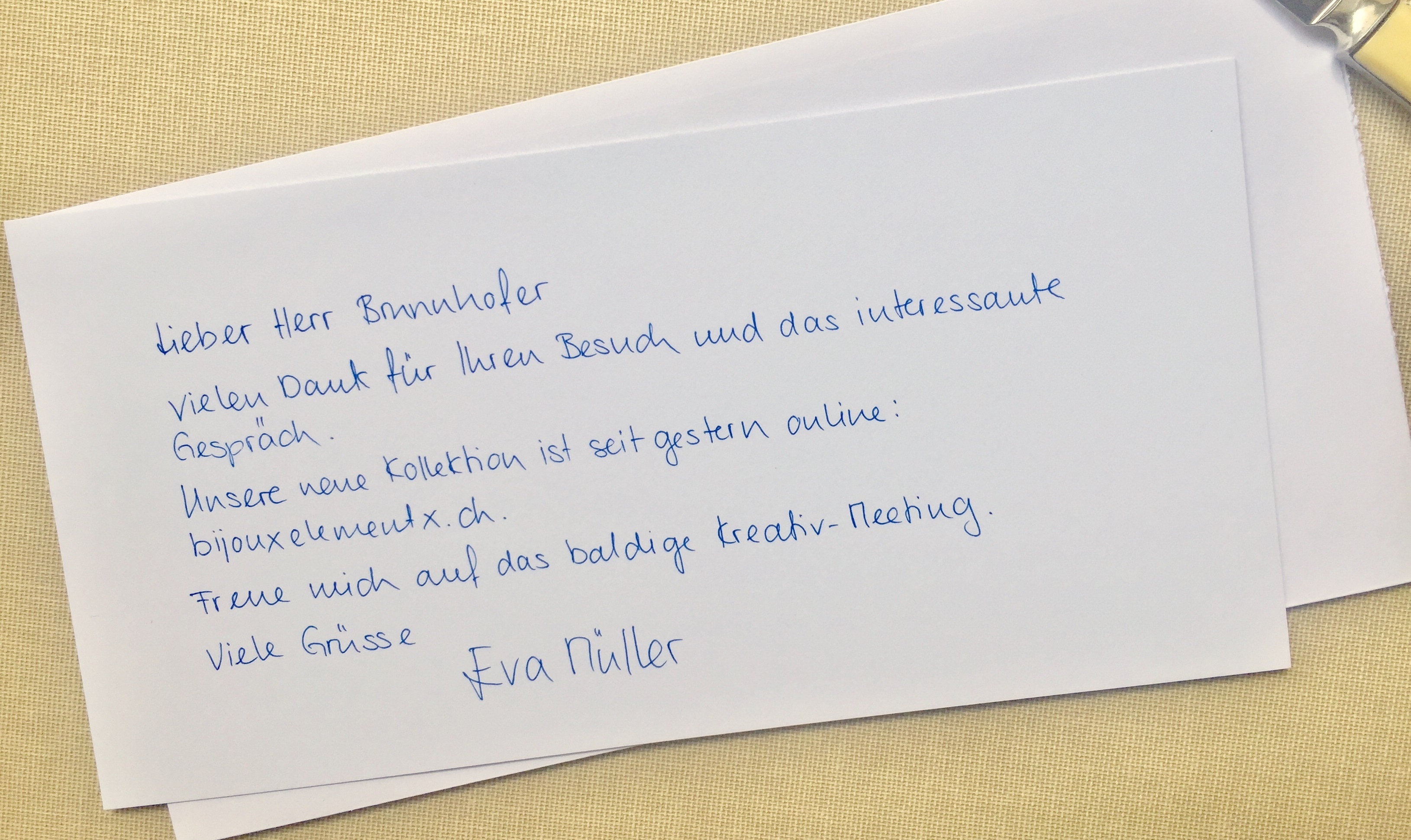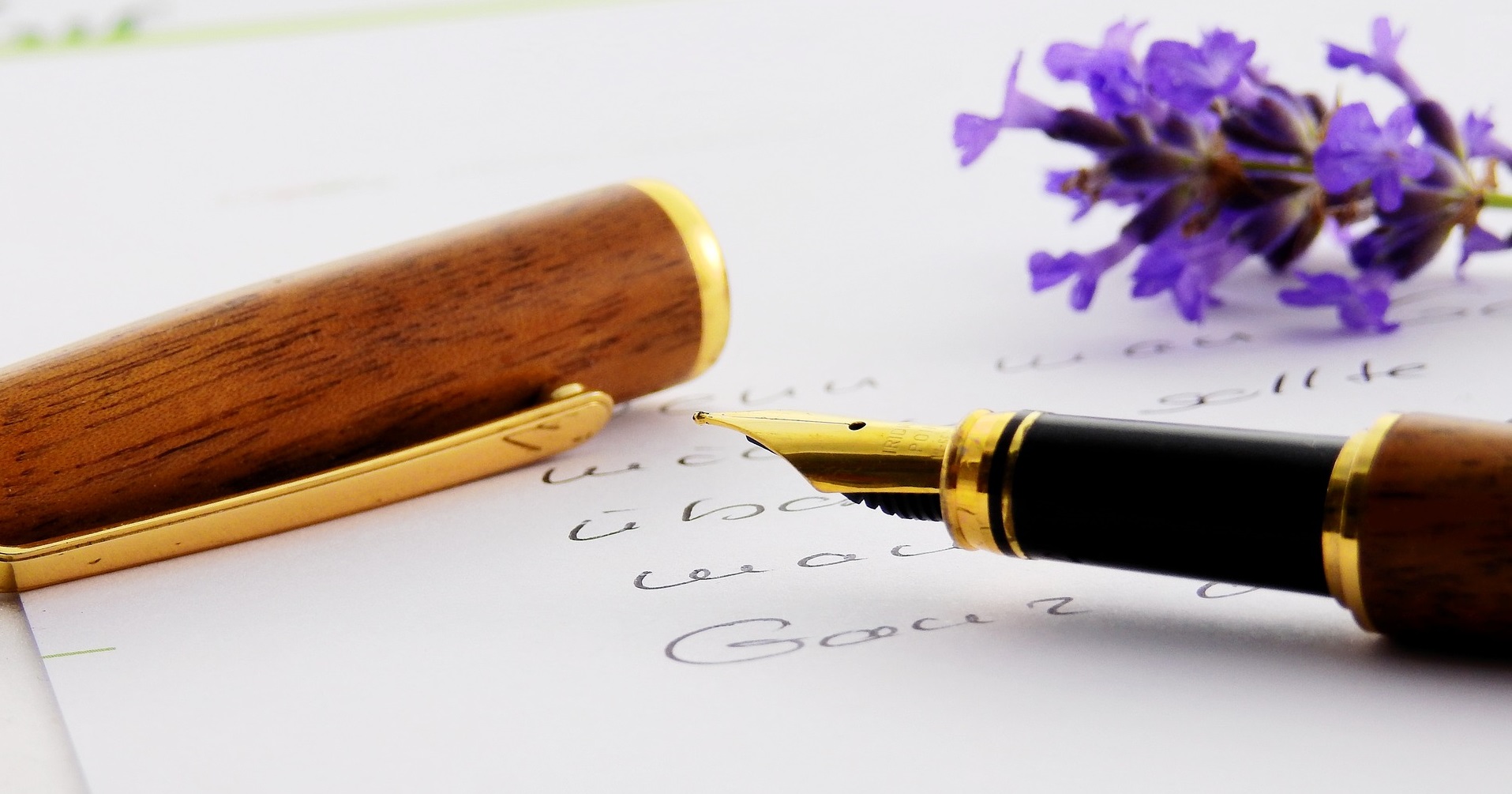The word calligraphy has its origins in the Ancient Greek language and consists of the words ‘kalós, which means beautiful, and ‘gráphein’, the Greek word for writing. Calligraphy is always done by hand and therefore stands in contrast to typography as the art of arranging type.
For centuries people have used the art of calligraphy to communicate with one another. The oldest examples are actually cave paintings, followed by Egyptian hieroglyphs and Asian characters. By the way: a handwritten piece is not only a way to express one’s thoughts, but the handwriting itself is a unique element of design that allows to express one’s creativity – with often stunning results.
WHICH MATERIALS ARE NEEDED WHEN STARTING OUT?
Fundamentally, everyone can learn calligraphy. Next to time, patience (and nerves), scribes will need the following materials:
- calligraphy paper
- writing utensil
- Indian or drawing ink
- a triangular set square to make lines
- a suitable desk pad
CALLIGRAPHY PAPER
is very different to normal drawing paper and has a very high quality. The quill or fountain pen easily glides over the smooth surface and a good sizing makes sure that the ink does no bleed or blur. Due to its heavy grammage the paper does not curl or bend even when using a very wet application. Beginners better use practise paper with auxiliary lines, or as an alternative they can draw these lines themselves using a triangular set square as we all know it from geometry classes.
INK
The ink used in calligraphy is a deep, rich black, highly pigmented and glossy. It has an outstanding opacity and is light-resistant. In contrast to this thicker calligraphy ink, the ink used for normal letter writing is water-soluble, less pigmented and far thinner.
WRITING UTENSILS AND QUILLS
Calligraphy novices will find a great variety of quills and other writing tools on the market. When writing calligraphy the letters are tenderly drawn unto the paper and are not in any sense engraved due to pressure: a ball pen therefore is not the right tool for beautiful penmanship. A fountain pen or better nib pens, on the other hand, are great tools for calligraphy.

Next to digital campaigns the core elements of customer communication can also be done successfully in an analogue way. Namely written by hand.
Sophie the handwriting robot, who writes messages as if by hand, supports writing projects in small and large numbers of copies. It is impossible to distinguish the script from a real handwriting, because it has the typical handwriting characteristics like the spacing between words, the force used to write on paper or the individual ways of writing each letter. Of course Sophie and her team of handwriting robots can also learn your individual handwriting.
The easiest way to start is with a classic dip pen and ink well with special calligraphy ink. No matter which tool a writer chooses, they have to feel comfortable using it. Because the nibs are individually attached to the pen, calligraphers can write in very different strengths and widths. The more than 1,600 nibs can be classified in the categories:
- pointed nib
- broad nib
- drawing nib
- stub tips
WRITING WITH A ROUND NIB
Most writing tools like felt markers, pencils and ballpoint pens have a rounded point and can be bought with different stroke widths. Thanks to the rounded form of the nib these writings tools can be held in various and therefore individual ways. No matter how the pen is actually angled: the line is always consistent, which makes it possible to write even long texts very comfortably. This way of writing is very easy to learn, but is also not as elegant as writing with a chisel nib.
WRITING WITH A CHISEL NIB
A chisel nib is best suited for writing with an elegant and expressive hand. As the name indicated the tip of the pen narrows down in a v-shape and has a thin and a wider side. This makes it very important how the pen is held, because the angle determines how thin or wide the line is drawn unto the paper. To get a clear typeface the writer always needs to hold the pen in a 45-degree angle, for example in relation to the baseline. This initial angle has to be adjusted accordingly when writing. That of course makes writing with a chisel tip far more demanding than writing with a round tip. The relation between the height of the letter and the thickness of the line also plays an important role. A good proportion can be achieved, if the writer uses 4-5 times the widths as height for the letters. The wider the chisel tip the higher will be the letters and the other way round.
The most important auxiliary lines
- the body of the letter lies on the baseline
- the acsender defines the height of the ascending letters
- the top guideline determines the height of the upper case letters
- one part of the letter, the upper length/ascender lies between the 2nd top line and the 7th x-line
- one part of the letter, the descender, lies underneath the base line
- the x-height (the height of the letter or parts of the writing) lies between the first base line and the second ascender.
- The x-line as guideline determines the correct position for the upper limit of the 6th x-height
- the slope line determines the right diagonal
Calligraphy and hand lettering
In the English language area modern calligraphy is often used as a synonym for hand lettering. Modern hand lettering, though, gives far more design freedom than calligraphy. Hand lettering artists paint the letters with an ink pen or brush instead of elaborately drawing them by dip or fountain pen.
CALLIGRAPHY – PAST AND TODAY
In the past many pupils still learned how to write beautifully in school, but this has increasingly been replaced by typing with a ten-finger-system and computer classes. This is why a fountain pen, dip pen or ink pen often feel like a foreign object in our hands, today.
Nonetheless the art of writing beautifully can still be learned later in life. Beginners need the right calligraphy paper, the according writing tools and the right ink. With these materials, enough time to practise, strong nerves and patience everyone will actually be able to learn calligraphy!









